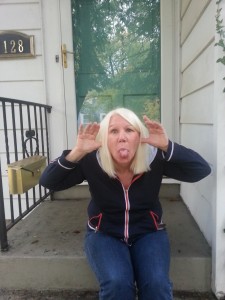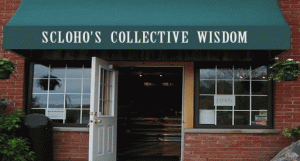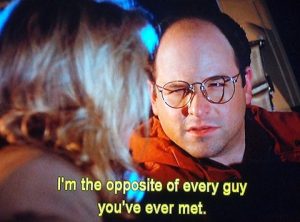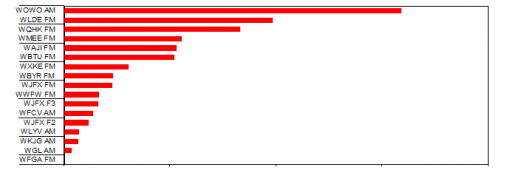by Scott Howard | Jul 26, 2016 | Marketing and Advertising Insights, ScLoHo's Collective Wisdom, The Not-So-Secret Writings of ScLoHo, WOWO Fort Wayne Radio Advertising with Scott Howard
Another great article from Mediapost about the value of the Baby Boomer generation. The biggest demographic of listeners to my radio station, News/Talk 1190 WOWO in Fort Wayne, Indiana are the Baby Boomers.
Here’s some more information to help you understand WOWO Radio’s Baby Boomer Listeners:
…The fact is, adults aged 55 to 64 outspend the average consumer in nearly every category, every year, per the U.S. Consumer Expenditure Survey, despite the fact that marketers obsess over the younger, Millennial segment. According to a 2015 survey by the AARP’s Influent50 in conjunction with ORC International, 40% of boomers agreed that companies aren’t adequately addressing what’s important to people their age…
Here’s additional highlights that apply to WOWO Radio listeners:
Boomers Value Comfortable Living
Today’s aging population aren’t leaving their lifelong homes for retirement communities; they’re leaving them for nicer homes. Better Homes and Gardens Real Estate found that 57% of homeowners aged 49 to 67 planned to move out of their current home. Seventy percent of that group want their new home to be the best in which they have ever lived. They’re looking for new construction, amenities and communities in which they can pursue active lifestyles.
Boomers Prioritize Retaining their Youth
(Boomers) came of age with consumerism, and perhaps more than other age groups, have come to measure self-worth according to external factors. Much of the demographic’s … spending is on products that will help them maintain their youth and energy.
Cosmetics, exercise equipment, vitamins and diet soda are all products in high demand by boomers. Still, when you think of how those products are marketed, the boomer target doesn’t immediately come to mind. For products that do consider boomers in their marketing plans, many do so based on inaccurate stereotypes — a mistake that can backfire, driving customers away from your product to one that doesn’t seem to condescend.
While Nielsen has referred to boomers as “The Most Valuable Generation for Marketers,” holding 70% of the disposable income in the U.S., only 10% of marketing dollars are devoted to reaching the segment.
What we have found at WOWO Radio that if we invite our Baby Boomer listeners to do business with local businesses that have what Boomers want, everyone wins. As a member of this generation, I know that my wife and I are spending money on 8 (soon to be 9) grandkids, doing home improvements on the house we bought 2 years ago, buying cars, electronics, dining out, vacationing regularly, taking up new hobbies and enjoying life.
Want to invite some Baby Boomers to spend their money with your business? Talk to me.
by Scott Howard | Jul 15, 2016 | Marketing and Advertising Insights, ScLoHo's Collective Wisdom, The Not-So-Secret Writings of ScLoHo
A marketing tip for those born in the 1970’s, 80’s or 90’s from Mediapost:
Call Me ‘Boomer’

She’s a Baby Boomer. She’s also my wife 🙂
Language in the mature market space can be a minefield, with words like “senior” and “aging” getting a strong negative response.
Some marketers have found ways to dodge the language pitfalls with finesse:
One restaurant I recently came across offers the “Sunset Dinner,” a delicious four-course repast for a very reasonable price. Offered between the hours of 4 and 6 p.m. weekdays, at tables overlooking stunning views of a roaring river, it seemed obvious that this special deal targeted retirees. Many restaurants would have called it an “early bird special,” a well-worn term certain to make a customer feel ancient. However, “Sunset Dinner” sounds appealing and romantic.
As other marketers struggle to avoid alienating stereotypes about Boomers as this demographic heads into retirement, there’s good news: According to a 2015 Pew Research study, you can actually just use the word “Boomer.” This generation actually likes its nickname.
The study found that Boomers are more likely to embrace their generational label than any other age group. A large percentage of Boomers actually feel that their label fits them.
Seventy-nine percent of Boomers identified with their label, versus 18% of the silent generation, 58% of Generation X, and 40% of Millennials.
Boomers also had the highest percentage of those who think their label is a good fit.
Thirty-one percent said it applies to them “very well,” and 39% said “fairly well,” for a total of 70% positive reactions.
The other generations lagged behind in terms of thinking their labels apply:
Silents: 14%; Gen X: 38%; Millennials: 30%.
Some other interesting facts in the study:
- Boomers and the Silent Generation were generally more likely to see themselves in a positive light than Gen X and Millennials.
- Boomers were the most likely to see themselves as environmentally conscious.
- Boomers tied with Gen X as most likely to see themselves as entrepreneurs.
It’s interesting that Boomers’ positive view of themselves also extends to their nickname. Although many words are red flags for mature market consumers, the next generation of retirees doesn’t seem to mind the B-word.
Considering that roughly 10,000 of this generation will turn 65 every day for the next 19 years, it’s nice to know that the term “Boomer” may resonate more positively with them than labels like “senior citizen” or “retiree.”
by Scott Howard | Jul 11, 2016 | Marketing and Advertising Insights, ScLoHo's Collective Wisdom, The Not-So-Secret Writings of ScLoHo
Last month I got an email from Roy Williams that I’m going to share in it’s entirety.
Agree or Disagree? Contact me and let’s talk. 
10 Most Common Mistakes in Marketing
1 Inappropriate Use of Social Media
The whole world is on FaceBook, but is that the right place for your product or service to be advertised? To get a clear idea of the kinds of offers that are working well on FaceBook, go to the Success Stories page at FaceBook.com. Judging from this list of success stories, it would appear that FaceBook works extremely well for getting people together socially, not so well for hard goods and services.
(HINT: I think there may be a reason they call it “social” media.)
2 Overconfidence in the Value of Targeting
Jeffrey Eisenberg insightfully points out that, “online customers are exactly the same people as offline customers, yet advertisers tend to think of them as an entirely different species.” For the same amount of money it costs you to reach 5 tightly targeted customers online, you can reach 5 customers who have that same profile PLUS 127 of their friends by using broadcast TV or radio. Do you want your brand to be the one people think of immediately and feel the best about when they finally need what you sell?
3 The Assumption that Every Message is Relevant
Why does every advertiser believe their product or service category to be intrinsically interesting? More than information, entertainment is the currency with which you can happily buy your prospective customer’s time and attention. But most ads have zero entertainment value.
4 Fear of Criticism
Most ads aren’t written to persuade. They’re written not to offend. But any message that has the power to move people will always move some of them in the wrong direction. When you’ve written a good ad, you must brace the advertiser for the negative backlash they will receive from people who are anxious to be offended. The only alternative to this is to forever settle for ads that are mushy, mundane and mediocre. Please don’t.
5 Measuring Ad Effectiveness Too Quickly
Its claim to “instantly and accurately measure every ad’s effectiveness” is part of what makes digital marketing so appealing to advertisers. But didn’t you say you want your brand to be the one people think of immediately and feel the best about when they finally need what you sell? This requires ongoing advertising and longer measurement cycles. You cannot hold every ad immediately accountable and expect to build relationship with your customer.
6 Unsubstantiated Claims
Adjectives are the marks of an ad filled with empty rhetoric. Verbs are the marks of an ad that demonstrates its claims. Verbs – action words – “show” your customer what your product can do. Fluffy adjectives simply “tell” them. In the words of Christopher J. Maddock, “Show, don’t tell.”
7 Believing that “Old” Media No Longer Works
It is true that you need a website and that most customers are going to visit your website before making first contact with you. Therefore, it’s vital that your website be a good one. But if you believe that online marketing is the most efficient way to drive traffic to your website, you need to go back and read Most Common Mistake #2. Do you want to see a massive jump in the effectiveness of your online ads? Begin advertising on radio or television. But Take Note: your elevated metrics will make it appear as though your online efforts are working magically well when, in fact, the credit should be attributed to mass media.
8 Assuming “The Decision Maker” Is The Only Person You Need to Reach
Decisions aren’t made in a vacuum. You must also win the influencers if you want to create a successful brand. If you don’t value the opinions of influencers you’ll evolve into a direct-response marketer. But does your business category lend itself to direct response?
9 Believing that “Millennials” Aren’t Like the Rest of Us
Millennials aren’t a tribe, they are a collection of tribes. They do not behave as a single, cohesive birth cohort. Google “Millennials” and the dictionary definition that will pop up will show the word “millennial” most commonly used in this sentence: “The industry brims with theories on what makes millennials tick.” But when you look at a list of what millennials supposedly want, it’s exactly what the rest of us want. Yes, they’re not like we “50-somethings” used to be, but then we’re not like we used to be, either.
10 AdSpeak
People don’t hate advertising; they hate boring advertising; they hate predictable advertising. They hate the time-wasting, life-sucking sound of too many words wrapped around too small an idea. They hate AdSpeak. But they love entertainment. Learn to purchase your customer’s time and attention and goodwill with delightful, interesting, entertaining ads.
Come to Wizard Academy and we’ll teach you how.
Roy H. Williams
by Scott Howard | Jul 5, 2016 | Marketing and Advertising Insights, ScLoHo's Collective Wisdom, The Not-So-Secret Writings of ScLoHo
I work in a world of opposites.
I help people solve their marketing problems.
I help them buy the solutions that take care of those marketing problems.
I don’t like selling.
Hang on a second. Let me clarify.
I don’t like selling stuff to people who don’t want to buy the stuff I have for them to buy.
I prefer to sell solutions to people who want to buy solutions.
So what happens when I offer solutions to people that they should buy but for some reason they can’t or won’t?
I either wait or move on.
See, I prefer a no-pressure method.
If you are a potential client of mine, we’ll work on your schedule to launch because we need to use your time table.
Because I see opportunities as we discuss your business, I will stay on top of things and present options that may not be on your radar yet. But compared to the sales guy that are focused on their monthly quotas and packages and what-not, I am “no-pressure”.
I call it focusing on the big picture.
Seth Godin wrote about this approach, calling it The Long Run: 
It’s about scale. Pick a long enough one (or a short enough one) and you can see the edges.
In the short run, there’s never enough time.
In the long run, constrained resources become available.
In the short run, you can fool anyone.
In the long run, trust wins.
In the short run, we’ve got a vacancy, hire the next person you find.
In the long run, we spend most of our time with the people we’ve chosen in the short run.
In the short run, decisions feel more urgent and less important at the same time.
In the long run, most decisions are obvious and easy to make.
In the short run, it’s better to panic and obsess on emergencies and urgencies.
In the long run, spending time with people you love, doing work that matters, is all that counts.
In the short run, trade it all for attention.
In the long run, it’s good to own it (the means of production, the copyrights, the process).
In the short run, burn it down, someone else will clean up the problem.
In the long run, the environment in which we live is what we need to live.
In the short run, better to cut class.
In the long run, education pays off.
In the short run, tearing people down is a great way to get ahead.
In the long run, building things of value makes sense.
Add up the short runs, though, and you’re left with the long run. It’s going to be the long run a lot longer than the short run will last.
Act accordingly.
by Scott Howard | Jun 13, 2016 | Marketing and Advertising Insights, ScLoHo's Collective Wisdom, The Not-So-Secret Writings of ScLoHo, WOWO Fort Wayne Radio Advertising with Scott Howard
WOWO Radio has more Baby Boomer women listeners than any other Fort Wayne radio station by at least 10,000. That was one of the items I pointed out in our last article.
Baby Boomer women control the biggest pile of consumer spending still and for the next 7 to 10 years. 
Let’s continue with part 2 in a series from Mediapost, How To Connect With Baby Boomer Women. Here’s the highlights that I can help you and your business with WOWO radio:
1. Don’t forget the purchasing power of self-employed Boomer women. Recognize that she is working and wants to find meaning through work as long as she can.
2. Avoid using the word “retirement.” She wants to connect with her aspirations through the increased freedom to choose how and where she will contribute through the full utilization of her skills and abilities.
3. Engage her in dialogue; she wants to establish an authentic relationship with you and your company.
4. Don’t make assurances on which you can’t deliver. Tell her what you’ll do for her, not how great you, your product or company is.
5. Listen to learn what is motivating her. The most important question you can ask is “What are you hoping your planning for the future will allow you to achieve.”
6. Don’t be afraid of a spiritual slant in your messaging. Survey results show 44% of Boomer women are turning to sources other than organized religion for spiritual guidance.
7. Although not very happy about it, she can laugh at the physical effects of aging. You can successfully use a “women like her” to comment humorously on conditions and circumstances only one of her own would fully understand.
8. Baby Boomer women are more active than you may think. Your images should reflect her full level and range of engagement in life.
9. Avoid using a single relationship to define her. She may be managing health care for her parents but she’s not only a “caregiver.” She’s also “grandma” but she would define her life much broader. The brands of suppliers who best support her multi-relationships underlying her purchases will win her business.
10. Cater to her desire to learn. Link your brand and products to opportunities to learn more about issues and concerns she faces every day. Her focus has shifted to experience, rejuvenation and personal growth.
11. Don’t talk down to her. What she didn’t gain through formal education she gained through experience. Insult her intelligence at your peril.
Want to know more? Contact me.
by Scott Howard | Jun 10, 2016 | Marketing and Advertising Insights, ScLoHo's Collective Wisdom, The Not-So-Secret Writings of ScLoHo, WOWO Fort Wayne Radio Advertising with Scott Howard
A few years ago when I started on the WOWO radio advertising sales team and I was sharing information about the WOWO listeners, I kept running into women who would say, “I’m a little unusual because I listen to WOWO.”
I pointed out to them that they were in good company. Look at these numbers from our last rating survey:
Total Weekly WOWO Listeners age 12+: 107,000
Total Weekly WOWO Female Listeners age 12+: 44,000
Total Weekly Female Listeners age 45+: 34,000
That last number is important. Baby Boomer Women are the ones that have the buying power that most businesses want. Of all the radio stations in Fort Wayne, Indiana, WOWO has more than any other station by at least 10,000. 
Last month Mediapost shared an article, How To Connect With Baby Boomer Women and I’m sharing the highlights because these are the Women of WOWO that I can help you reach.
1. If she feels your authenticity, that you have really listened to her and you genuinely care, she will reward you.
2. They love products that make them feel more creative and helps them connect to their friends and family.
3. If you are looking for better-educated women with more discretionary income, you will find her online. She is not just a passive observer; she is quickly adopting the internet usage patterns of younger generations and posting content herself.
4. She is free to choose the “best of” from all stages of her life, as well as incorporating new products, services and behaviors.
5. Marketers in search of aspirational messaging are advised to look higher up Maslow’s pyramid toward new levels of simplicity and altruism and away from icons drawn from the assumption that she spends money only to gain the approval of others.
6. Boomer women are more than six times as likely to make purchase decisions based upon their personal values.
7. Perceptive marketers recognize that the Boomer woman knows she has entered and is transiting through a new lifestage and will reward them for recognizing her special needs and interests.
8. Market to her through women like her. Keep in mind that women want to know that the person offering advice or inspiration is someone from both the gender and lifestage that has personally advanced through the same lifestages and transitions.
9. She doesn’t aspire to be ignored. They don’t like ads that never feature women 50+.
10. Show her respect by providing her the facts. A product example is Olay anti-aging products. Olay used an abundance of useful information and straightforward facts about their products with extensive reviews and ratings from other women rather than clever imagery.
That’s just the first 10. Mediapost shared a follow up article this month that I’ll share the next time.







